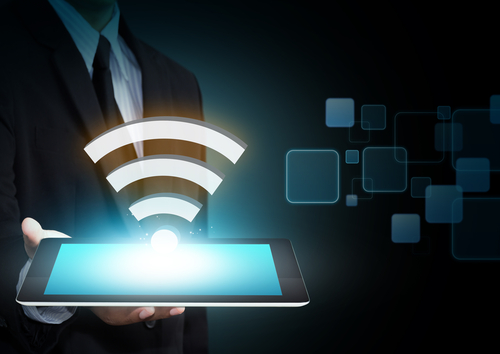When IBM PC launched in 1981, few businesses considered the PC a must-have for their employees. Yet in less than a decade, a PC was as fundamental to the workplace as pencils and paperclips.
But at the same time that desktop PCs became a staple of the modern office, laptops were still a luxury. Fast-forward a decade: laptops are outselling desktop PCs and no serious mobile worker can be without one.
The first iPhone shipped in 2007 and the iPad in 2010. Within a couple of years both had wedged their ways into corporate budgets. Yet despite the millions upon millions of PCs, laptops, smartphones and tablets that have shipped in the three and a half decades since that first IBM PC, they only scratch the proverbial surface of the building tsunami of intelligent devices that already outnumber the 7 billion people occupying this planet. Yet all of these devices are mere piles of junk – scraps of silicon, plastic and metal – if they cannot connect.
>See also: Why the Internet of Things is more than just a smart fridge
As for the Internet of Things, Gartner recently estimated that by the end of 2015 there will be 4.9 billion connected ‘things' in use, and this will grow to a staggering 25 billion by 2020. The market potential for device manufacturers working in the space is huge too, with IDC predicting that by 2020 the global IoT market will be worth $1.7 trillion.
The notion of the internet connecting people and devices like never before is undoubtedly an exciting one. For instance, your car could book its own service or your home might run on auto pilot. Billions of man hours will be accounted for by self-aware products, which will see a transformation of work, play and society. While a lot of the hype around IoT remains star-gazing, the reality of the connected future is much nearer than you think, thanks to the continued global growth of Wi-Fi.
Wi-Fi everywhere
Wi-Fi connectivity is being included in a vast array of devices. A report from Strategy Analytics expects the number of Wi-Fi-enabled devices to grow to more than 7 billion by 2017. Interestingly, the report highlighted that Wi-Fi capability is now embedded in 68% of all consumer devices sold in the US and 57% of all consumer devices worldwide. In many cases, wired connectivity is on its way out – with many new laptops excluding ethernet ports from their features.
The growth of Wi-Fi isn’t just restricted to hardware; it remains users’ preferred connectivity option when using popular applications, such as Skype, Netflix or Facebook. For many people, cost and connectivity concerns remain when it comes to using 3G/4G services, so a ‘Wi-Fi first’ attitude is the norm.
This demand for Wi-Fi shows no sign of slowing down. Research commissioned by iPass last year estimated that by 2018 there will be over 340 million public Wi-Fi hotspots globally. However, when it comes maximising the potential of global Wi-Fi in the context of IoT and beyond, there is still work to be done.
An unlimited and frictionless future
From a technical standpoint, Wi-Fi is the clear connectivity choice when it comes to IoT. Ethernet and other wired solutions are ungainly and impractical. Cellular connectivity is pointless for stationary devices and remains too power-hungry for wearables – it's no surprise that Wi-Fi connectivity is a key component of the Apple Watch. Bluetooth remains too inconsistent and short-range, while proprietary solutions are both costly to device manufacturers and limit the true potential of IoT.
Ubiquitous, secure and hassle-free Wi-Fi connectivity is the future. Unlimited Wi-Fi will be provided as standard with both hardware and software products, with people using it in the same way they use 3G/4G today.
For IoT to truly take off and reach its potential, users should not need to worry about Wi-Fi data or device limits. Ultimately, any IoT device is only as good as the connectivity supporting it. There are millions of Wi-Fi hotspots globally, yet currently it isn’t the simple, hands-off and invisible experience users should expect.
It is all well and good having a smart internet-enabled home central heating system that can be controlled via a mobile device while you’re on holiday. But if the hassle of getting on Wi-Fi means you end up having to call your next door neighbour so that they can go round to change the room temperature, then clearly the IoT dream is somewhat different from the reality.
>See also: Making the Internet of Things a business reality
For this reason, it is easy to envisage IoT device manufacturers wanting to offer unlimited and frictionless Wi-Fi services as standard – the customer experience depends on it.
IoT is all about simplicity and efficiency. It is now up to the entire Wi-Fi ecosystem (device manufacturers, network providers, technology platform players, etc.) to work together to ensure that Wi-Fi of Things can deliver on its IoT promise.
Just as it took a few years for devices from PCs to smartphones to become ‘standard issue’, there will be a time in the near future when it will be unthinkable for a business not to cover the costs of connecting these devices.
Sourced from Gary Griffiths, President and CEO, iPass







